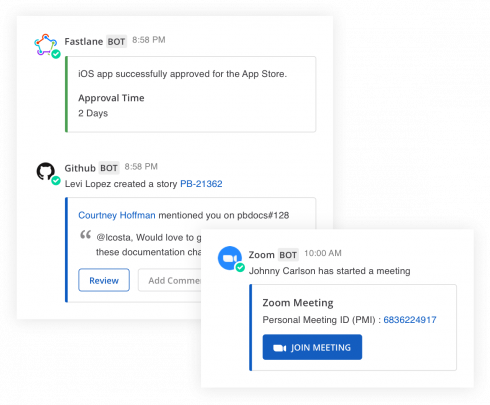
One of the basic premises of DevOps is to break down barriers between development and IT teams that historically functioned in relative siloes. Collaboration is the core tenet that makes DevOps work. As teams start to collaborate in real time, the idea is they will see fewer errors and more opportunities for innovation. Getting teams to work together is entirely different from getting teams to simply share status updates with each other.
Corey Hulen, CTO and co-founder of the open source messaging and collaboration platform Mattermost, explained developer and operations teams have silos of information where they are looking at different metrics, reports and log files and sometimes monitoring completely different things. In order to really gain the true value of DevOps, they need a common space where they can not only easily connect with each other (chat/video..), but also share files, systems and workflows.
Mattermost provides a central communications hub where everyone in an organization can come together, share updates and critical messages, work together to resolve incidents and outages, integrate DevOps tools and create a single shared view of ‘all the things’. Its notifications hub keeps everyone updated and on the same page, and social coding features enables teams to collaborate on code snippets. Integrations with popular tools like Jenkins, Jira, GitHub, Bitbucket, GitLab and PagerDuty allow teams to see all of the real-time notifications from across the development lifecycle — all without having to login to each of the systems.
The information gets placed in private or shared channels (depending on a team’s security needs) where developers, operations and even non-technical team members can participate in the conversation and work together — everyone having the same access to information. Sometimes, what ends up happening is there will be a team collaborating on a performance issue or system outage in the “war room channel,” and someone unexpected is listening in who has a solution to the problem, Hulen explained.
“I always describe it as a cooperative board game. You are all cooperatively trying to solve this problem, and every person brings a unique piece to the puzzle to solve it,” he said. “This really can only happen when everyone can see all of the conversations, files and data that are relevant to the issue.”
Making Sure the Conversation isn’t too Loud
Starting out, the ability to freely communicate is a very valuable experience, but as the conversations continue to build up it can start to feel like an information overload.
Mattermost enables bot integrations so teams can work better and faster. Some of the bots include the ability to monitor and debug clusters, receive best practices, respond to messages, and send notifications. Webhooks can be added to post messages to public, private and direct channels. But these can cause an excess amount of messages. To ensure the conversations don’t get too noisy, Mattermost enables custom desktop, email and mobile notifications; a do not disturb mode; favorite channels; and keyword mention alerts so DevOps team members can focus on what matters most to them.
Additionally, organizations can go in and remove some of the cruft by removing certain bots and webhooks that they find aren’t providing valuable information over time or moving them to another channel so they don’t block productivity. Teams can also use multiple channels to put all the webhook and bot information in one channel and then have a secondary channel to interact with all that information. “Mattermost has taken an approach where we’ve built a rock-solid platform and we give developers the API, and many integration options so they can extend the platform to fit their needs,” Hulen said. “We’ve found developers, in particular, really appreciate the ability to customize their collaboration tools.”
Staying Connected
Today’s DevOps teams are also more diverse than they have ever been as remote work has become a key asset to employees. A recent study from DigitalOcean found 86 percent of developers occasionally work from home, 33 percent work from home full-time, and 43 percent say working remotely is crucial when considering a job offer.
Remote work is another reason why a central communication hub is essential to a business. According to Hulen, Mattermost itself is a remote-first company, and having the messaging platform enables them to stay connected and a part of the team. Video conferencing plugins with Zoom, Skype, BigBlueButtom and other popular services enable teams to “see” each other and have face-to-face meetings. Mattermost also supports voice and screen sharing capabilities to expand remote teams ability to work together.
In addition, channel-based or topic-based communication features become an essential communication tool. “When you are in a remote environment, those types of channel-based systems really take off and lend to that experience. You may have really needy channels where people are doing real work or monitoring outages, but you can also have some fun social channels,” Hulen said.
“Minor features” like emoji reactions or giphy integration enable team members to convey emotion and have some fun with their posts. “Those things really make remote culture thrive,” said Hulen. “It is about keeping that human connection beyond work.”
Learn more at https://mattermost.com/
Content provided by SD Times and Mattermost





